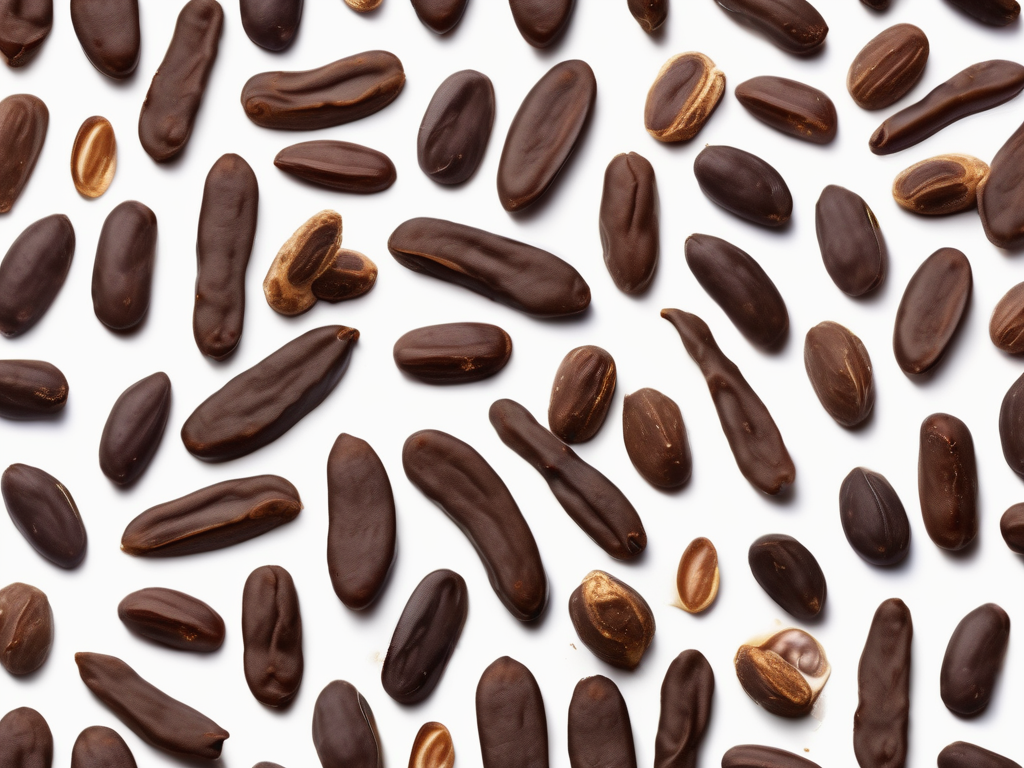
Top Tips for Preventing Mold Growth on Stored Carob Products
Get Your Free Food Safety Cheat Sheet
30 most common foods with instant answers. Print it and stick it on your fridge—completely free!
Top Tips for Preventing Mold Growth on Stored Carob Products
Carob is a delicious and nutritious food that is often used as a healthier alternative to chocolate. However, like any food product, carob can be susceptible to mold growth if not stored properly. Mold not only affects the taste and quality of carob but can also pose health risks if consumed. In this blog post, we will discuss some top tips for preventing mold growth on stored carob products. (Carob)
Understanding Mold Growth on Carob
Before diving into prevention tips, it's important to understand why mold can grow on carob products. Mold is a type of fungus that thrives in warm, damp environments with access to organic material. Carob, being a natural product, provides an ideal breeding ground for mold if not stored correctly. Mold growth can lead to discoloration, off-flavors, and potentially harmful mycotoxins developing on the surface of carob products.
Proper Storage Conditions for Carob
Ensuring proper storage conditions is crucial to prevent mold growth on carob products. Here are some key factors to consider:
1. Moisture Control
- Store carob products in a cool, dry place with good ventilation.
- Avoid exposing carob to high humidity levels as moisture can promote mold growth.
- Use airtight containers or resealable bags to keep moisture out.
2. Temperature
- Keep carob products away from direct sunlight and heat sources.
- Store carob at a stable temperature, ideally below 70°F (21°C) to inhibit mold growth.
3. Packaging
- Opt for high-quality packaging that provides a barrier against moisture and air.
- Check for any signs of damage or tears in the packaging that could allow mold spores to enter.
4. Shelf Life
- Check the expiration date on the carob products and consume them before they expire.
- Rotate older stock to the front and use it first to ensure freshness.
5. Cleanliness
- Clean the storage area regularly to prevent the buildup of dust and debris.
- Inspect the storage containers for any mold growth or signs of contamination.
Preventive Measures for Mold Growth
In addition to proper storage conditions, there are some preventive measures you can take to further reduce the risk of mold growth on stored carob products:
1. Inspect Before Buying
- Check the packaging for any signs of damage or moisture.
- Avoid purchasing carob products that appear discolored or have an off-smell.
2. Use Desiccants
- Place desiccant packs in the storage containers to absorb excess moisture.
- This can help maintain the dryness of the carob products and prevent mold growth.
3. Seal Properly
- Ensure that the storage containers are tightly sealed after each use.
- Proper sealing helps prevent moisture from entering and keeps the carob fresh.
4. Store Away from Contaminants
- Keep carob products away from other foods that are prone to mold growth.
- Store carob in a separate area to minimize the risk of cross-contamination.
5. Check Regularly
- Periodically inspect the stored carob products for any signs of mold growth.
- Discard any items that show visible mold, as it can spread quickly to other products.
Conclusion
By following these top tips for preventing mold growth on stored carob products, you can ensure the freshness and quality of your favorite treats. Proper storage conditions, preventive measures, and regular inspections are key to keeping mold at bay. Remember, mold can be harmful if consumed, so it's essential to take food safety seriously when storing carob and other perishable goods. With these guidelines in mind, you can enjoy your carob products worry-free and savor their delicious flavor and nutritional benefits.
Learn more about carob here. (Carob)
Related Posts
Here are some other articles you might find helpful:
Authoritative Food Safety References
These agencies and university labs inform every tip and health precaution we publish.
USDA FoodKeeper – Cold Storage Guidelines
Official refrigerator, freezer, and pantry timelines maintained by the U.S. Department of Agriculture.
Visit USDA FoodKeeperFDA Produce Safety Rule & Grower Guidance
Field-to-fridge handling practices that prevent contamination of fruits, vegetables, and leafy greens.
Visit FDA Produce SafetyCDC Foodborne Illness Prevention Hub
Surveillance-backed guidance on pathogens, symptoms, and steps to reduce foodborne illness risk.
Visit CDC Food SafetyUC Davis Postharvest Technology Center
University research detailing optimal storage atmospheres for produce after harvest.
Visit UC Davis PostharvestPenn State Extension – Home Food Preservation & Safety
Peer-reviewed extension bulletins on safe canning, chilling, and reheating practices.
Visit Penn State ExtensionGet Your Free Food Safety Cheat Sheet
30 most common foods with instant answers. Print it and stick it on your fridge—completely free! Want more? Upgrade to the complete guide with 70+ foods.
Scan your food directly and get instant safety info using our AI-powered camera feature.